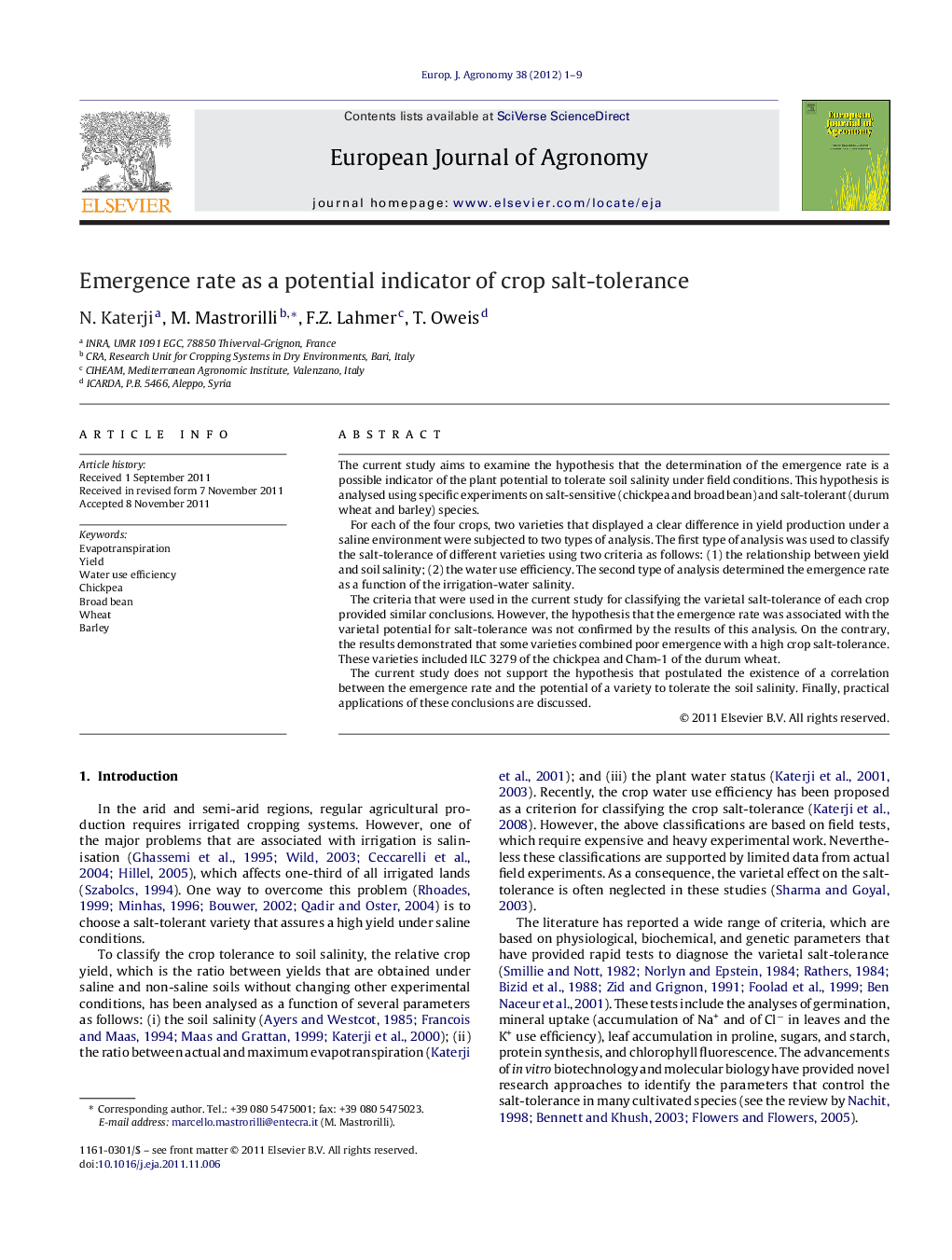| Article ID | Journal | Published Year | Pages | File Type |
|---|---|---|---|---|
| 4509200 | European Journal of Agronomy | 2012 | 9 Pages |
The current study aims to examine the hypothesis that the determination of the emergence rate is a possible indicator of the plant potential to tolerate soil salinity under field conditions. This hypothesis is analysed using specific experiments on salt-sensitive (chickpea and broad bean) and salt-tolerant (durum wheat and barley) species.For each of the four crops, two varieties that displayed a clear difference in yield production under a saline environment were subjected to two types of analysis. The first type of analysis was used to classify the salt-tolerance of different varieties using two criteria as follows: (1) the relationship between yield and soil salinity; (2) the water use efficiency. The second type of analysis determined the emergence rate as a function of the irrigation-water salinity.The criteria that were used in the current study for classifying the varietal salt-tolerance of each crop provided similar conclusions. However, the hypothesis that the emergence rate was associated with the varietal potential for salt-tolerance was not confirmed by the results of this analysis. On the contrary, the results demonstrated that some varieties combined poor emergence with a high crop salt-tolerance. These varieties included ILC 3279 of the chickpea and Cham-1 of the durum wheat.The current study does not support the hypothesis that postulated the existence of a correlation between the emergence rate and the potential of a variety to tolerate the soil salinity. Finally, practical applications of these conclusions are discussed.
► The relationship between the yield and soil-salinity characterises the varietal salt-tolerance. ► The analysis of water use efficiency (WUE) is consistent with the previous criterion. ► The emergence rate does not predict the potential of a variety to tolerate the salinity. ► Some crop varieties combine poor emergence with high soil-salinity tolerance or WUE.
